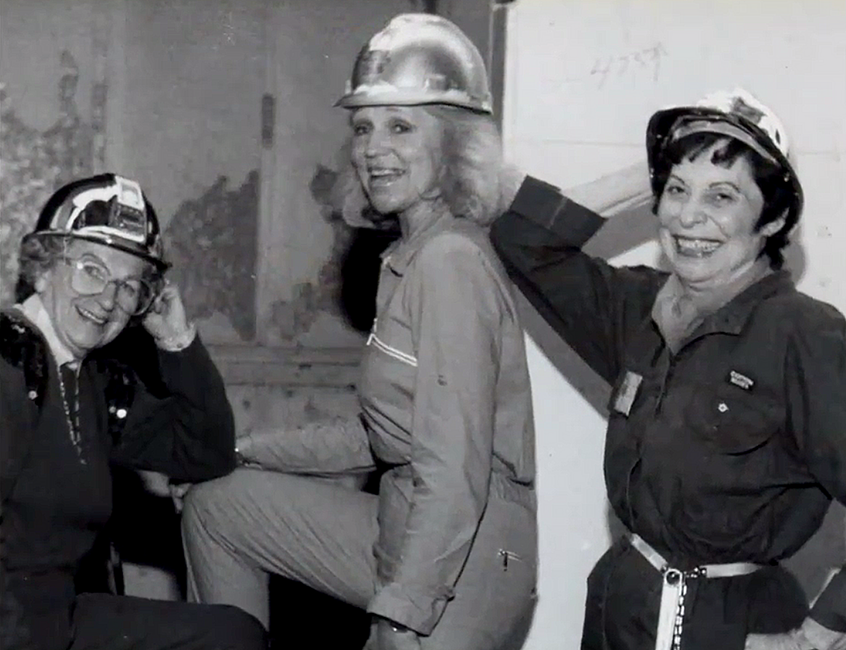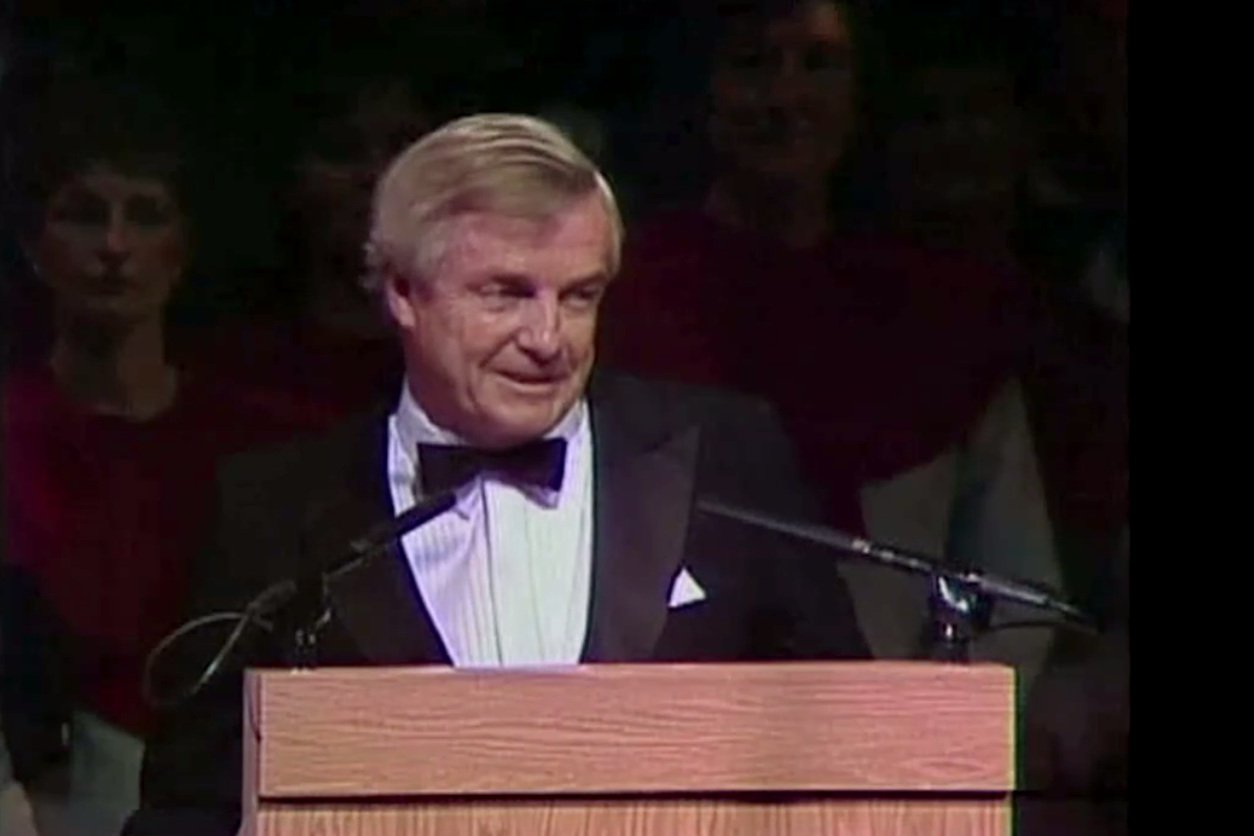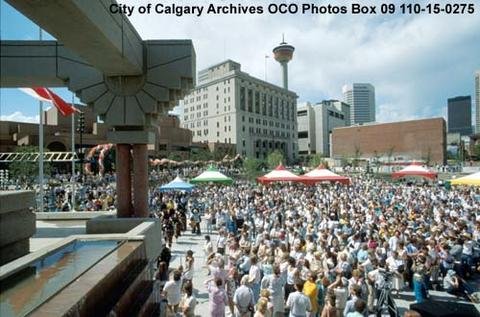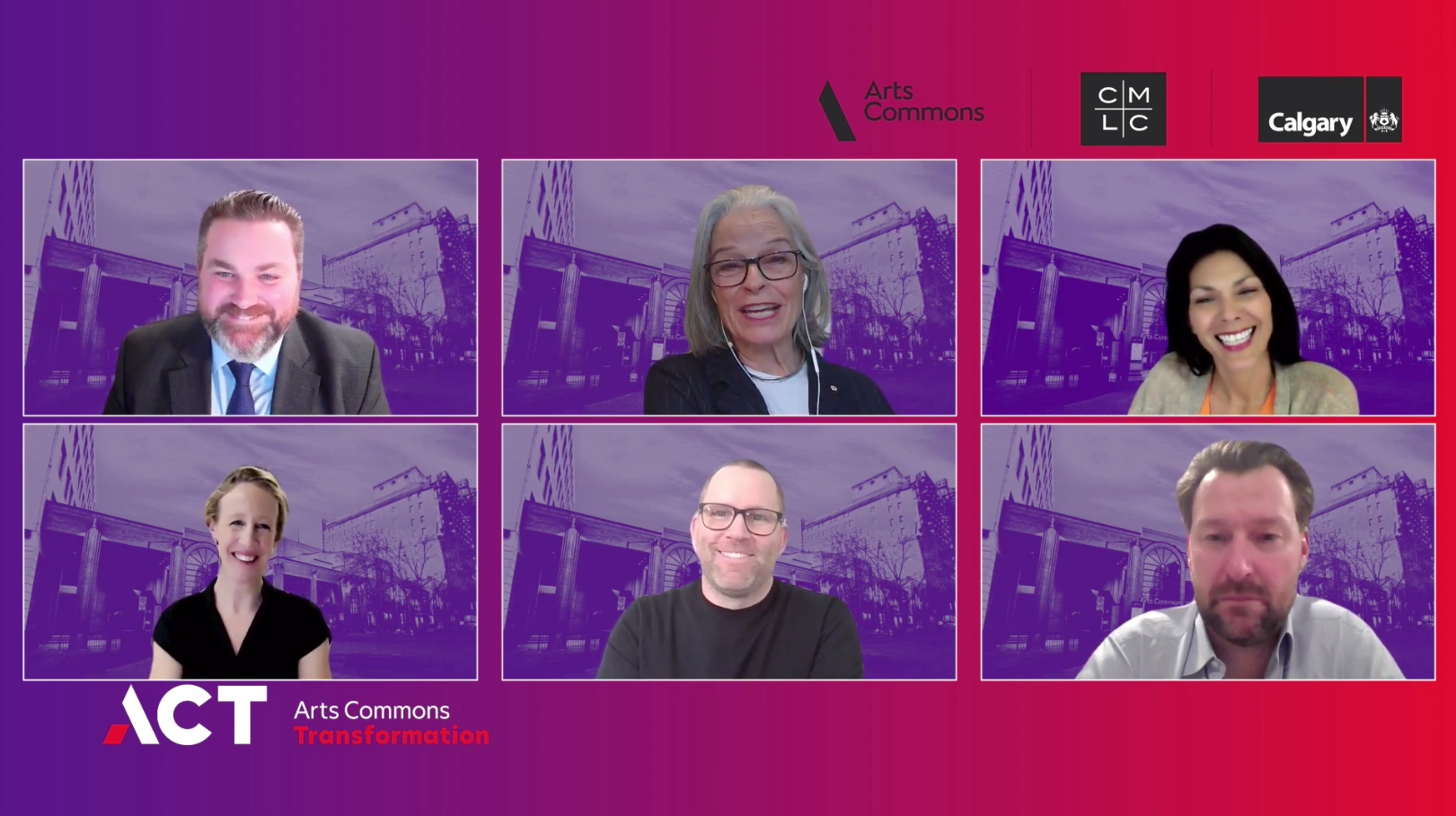Arts Commons Then and Now: The History of a Maverick Arts Organization
The Burns Building, Downtown Calgary, 1963, Alison Jackson Photograph Collection, Calgary Public Library.
The year is 1969—a year of firsts. Astronauts landed on the moon. Woodstock transformed a field in upstate New York into a cultural touchstone. And Sesame Street began lighting up television screens.
Calgary was getting ready to make its mark, too. The city was growing and its population of 374,000 was poised to explode—indeed, over the next decade it would almost double. It was clear that the prairie town was quickly becoming a major city. And every major city boasts a world-class entertainment facility. It was here, in 1969, that the need for a performing arts centre in Calgary was born.
In 1970, three women set to work making this dream a reality—Martha Cohen, Vera Swanson, and Sandra LeBlanc. Together, they formed the Calgary Region Arts Foundation (CRAF), a committee tasked with defining what the arts would look like in Calgary. With the maverick vision and daring spirit that defines so much of Calgary’s history, the three founders set the wheels in motion.
The momentum couldn’t have come at a better time. Theatre Calgary was being forced to move from their space on 9th Avenue, Alberta Theatre Projects wanted to relocate to a safer neighborhood, and the Calgary Philharmonic Orchestra was also ready for a change.
(L-to-R) Vera Swanson, Sandra LeBlanc, and Martha Cohen at the worksite of the Calgary Centre for the Performing Arts.
Arts Commons President and CEO Alex Sarian, who joined the organization in 2020 after seven years of leadership roles at New York City’s Lincoln Center for the Performing Arts, recalls a conversation he had with Sandra LeBlanc, where she reminisced about those formative days. “She would have the heads of the Calgary Phil, Alberta Theatre Projects, and Theatre Calgary over for dinner. Afterwards, they would open some wine, sit around the kitchen table, and dream about a future in which Calgary had a home for all these companies.”
In 1976, the committee resolved to build a performing arts centre that would provide high-calibre cultural experiences for Calgary’s growing population and act as a central hub for the arts in the city. Raising the funds to build such an innovative facility took determination—the city was facing a recession and purse strings were tight. When the founders approached the province, then Premier Peter Lougheed threw down the gauntlet: If the committee could raise $15 million, the province would fund the rest. It was a steep hill to climb, but a worthwhile undertaking. “We went before many different boards,” Vera Swanson told Arts Commons in 2010. “I remember one board member asking me what we would do if we could not raise the money and I said, ‘I don’t think about that, because I believe we will raise the money.’”
And they did.
Having surmounted the biggest challenge to getting the project off the ground, it was time to make good on the promise to build a performing arts centre. The decision was made to locate the centre in the downtown core. The area had long been a destination for entertainment, having previously been the site of the Empress Theatre. (In fact, elements of the original building can still be found in the Engineered Air Theatre!) The City of Calgary offered up the land for the price of one dollar—an investment which soon paid off. Construction on the new centre enabled significant renovations to the historic Burns Building, which was on the verge of demolition, and the city was eager to have a modern destination for the arts that would “create a vital theater district in the downtown core,” as then mayor Ralph Klein suggested.
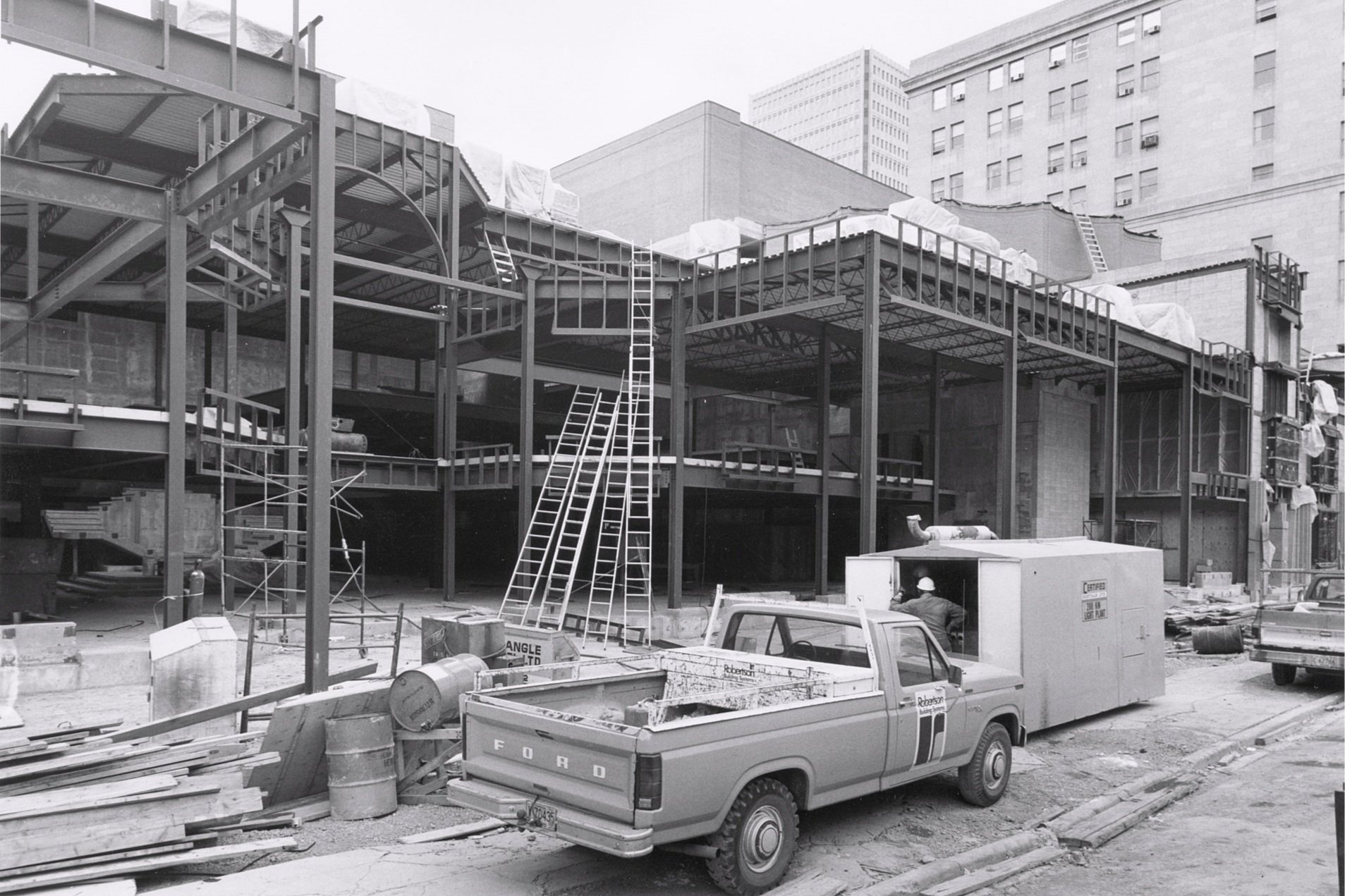
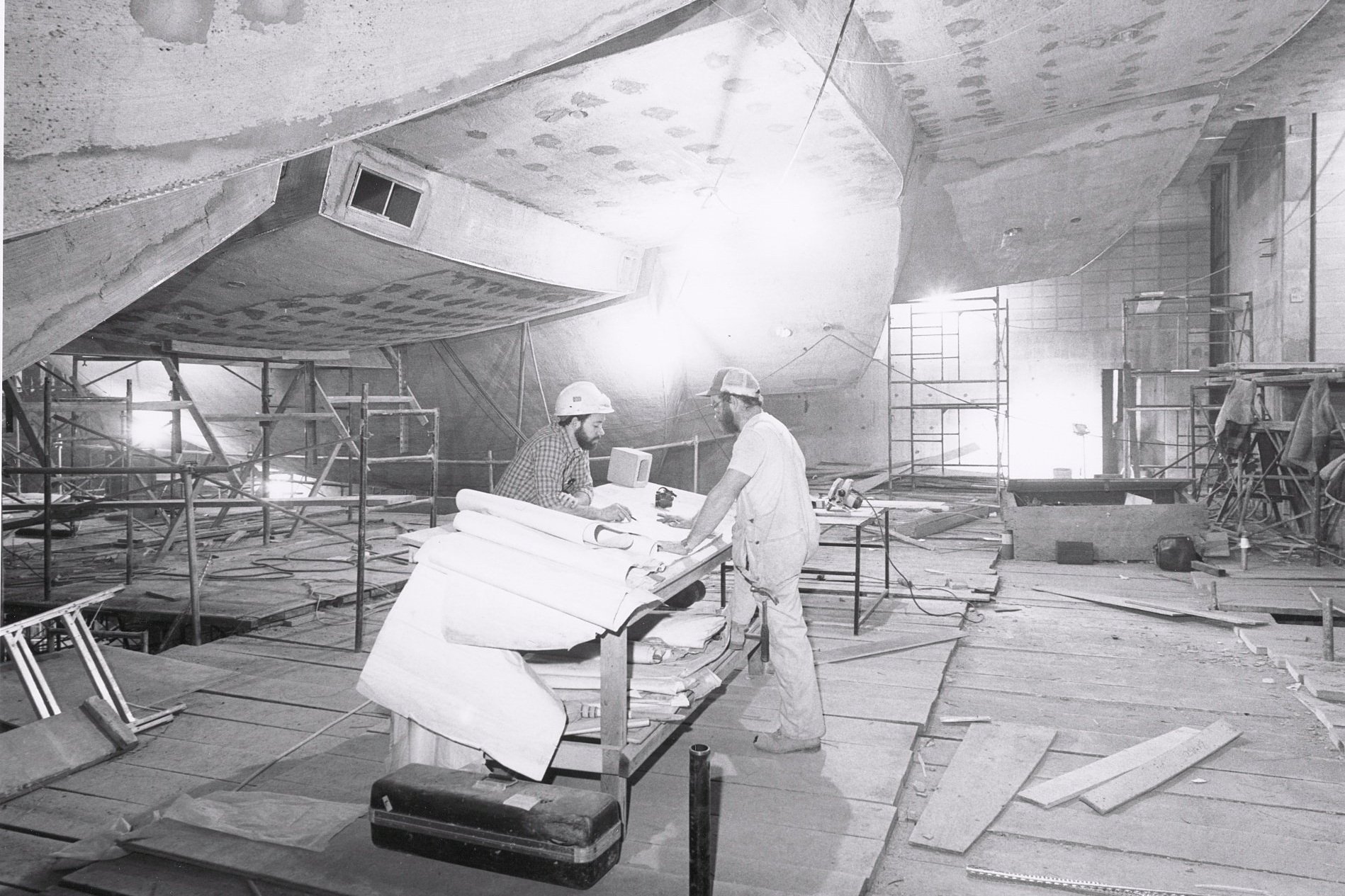
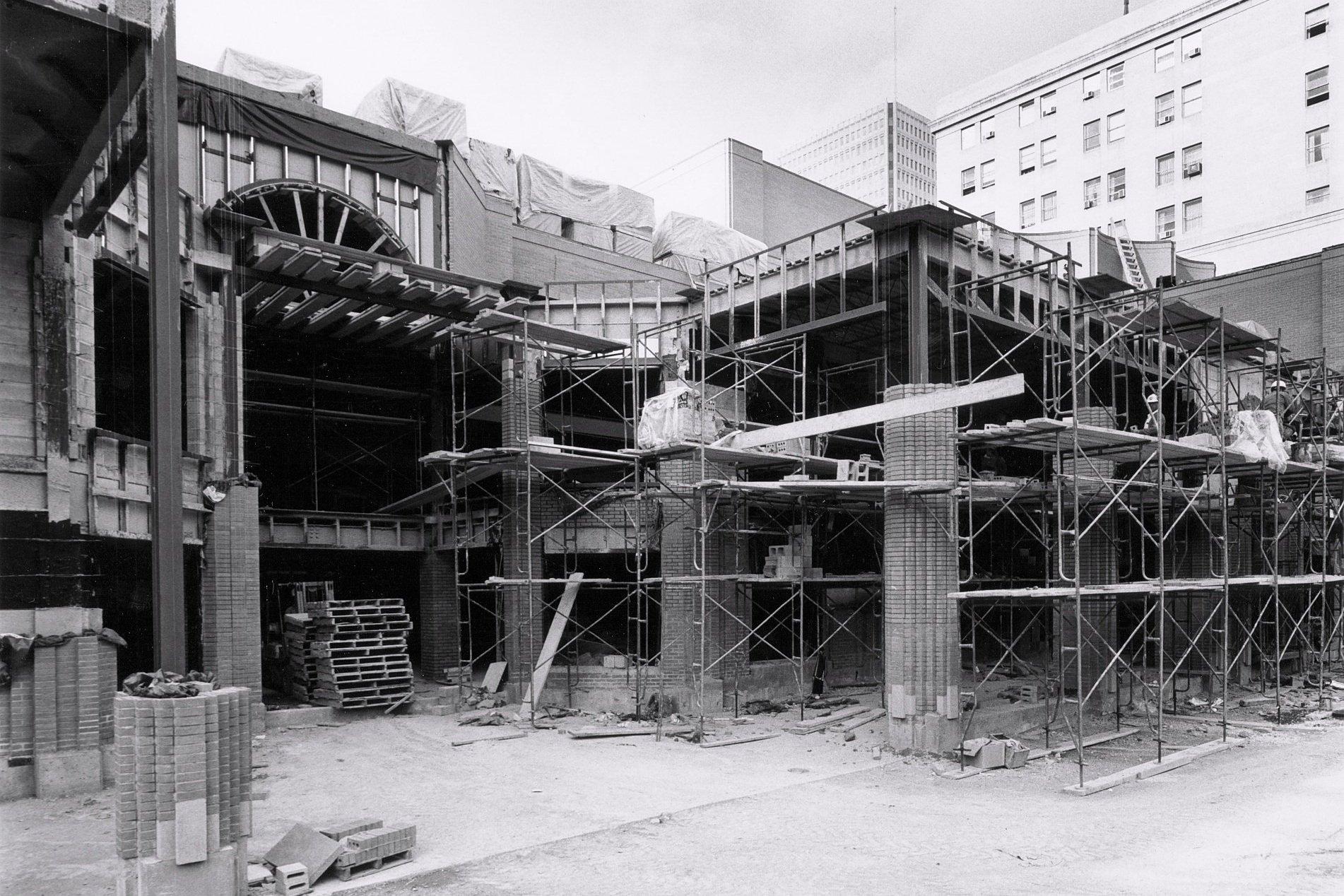
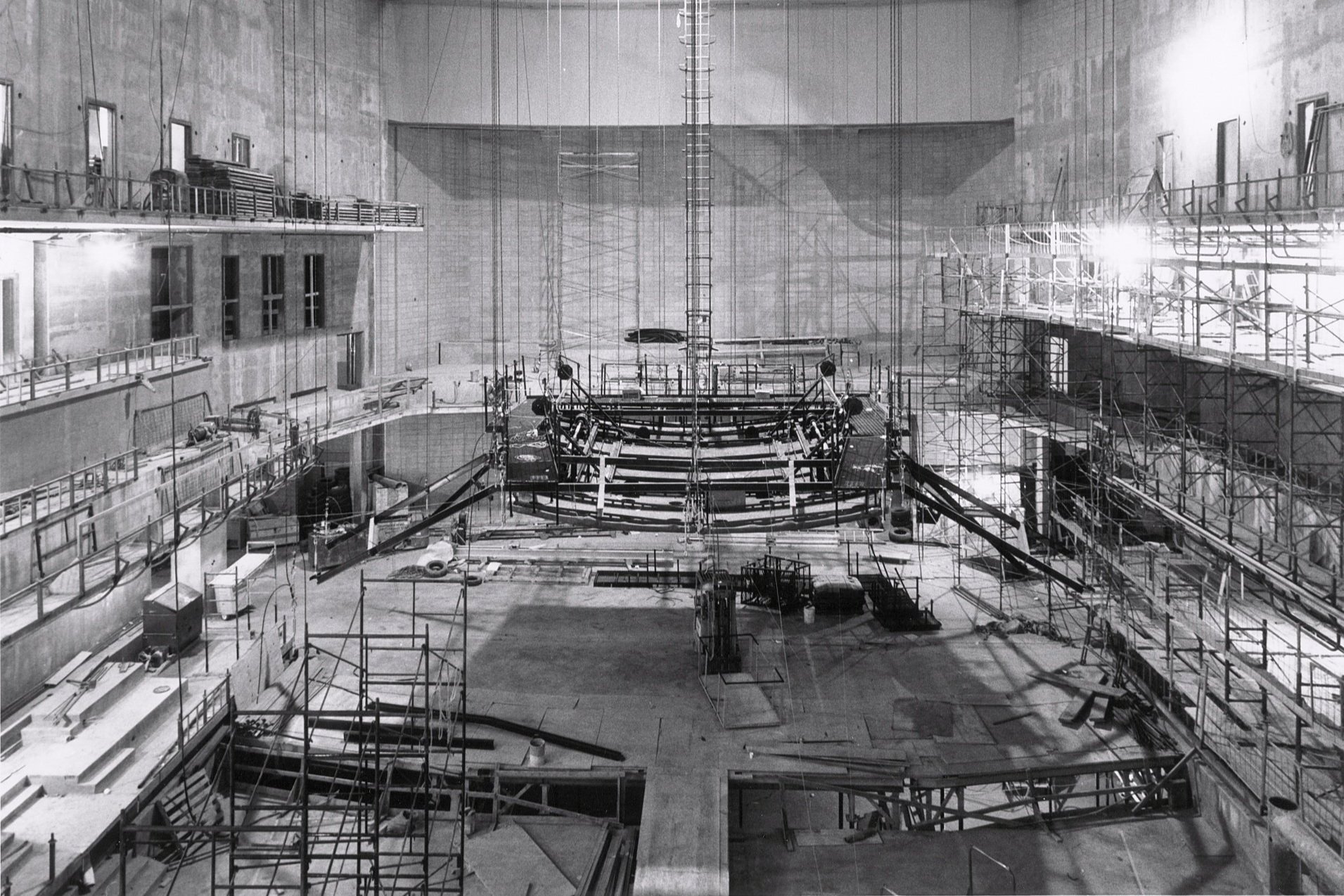

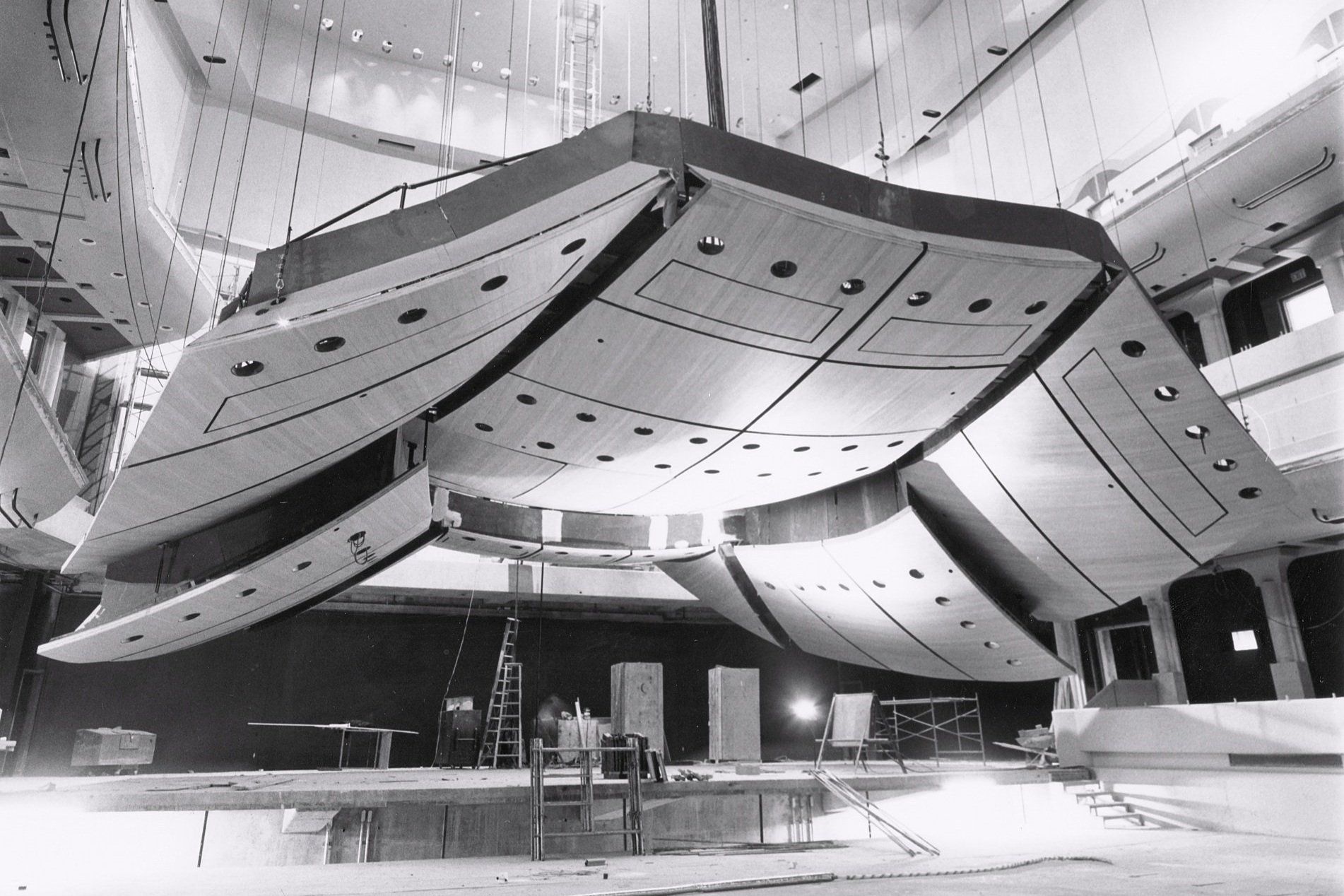
As Calgary ushered in the ‘80s, the winds of change began to blow. High-rises stretched through the skyline, the Saddledome brought the newly relocated Calgary Flames to the downtown core, and, in the fall of 1985, the Calgary Centre for Performing Arts (CCPA) threw open its doors. With the building draped in red ribbon for the momentous ceremony, Martha Cohen, Vera Swanson and Sandra LeBlanc, along with Premier Peter Lougheed and his wife Jeanne, welcomed Calgarians to the Calgary Centre for Performing Arts.
Former Alberta Premier Peter Lougheed at the Opening of the Calgary Centre for the Performing Arts, September 14, 1985.
“We remember so clearly standing on the stage of the Jack Singer Concert Hall in September 1985, thrilled to participate in the opening of the Calgary Centre for Performing Arts,” Lougheed told Arts Commons in 2010. “We were awed by the tremendous vision, determination, and grit of three Calgarians who saw the project through from its birth as an idea to its opening night.”
With the addition of the Jack Singer Concert Hall, the Martha Cohen Theatre, and the Max Bell Theatre to the cultural landscape, not only did the three companies finally have a home, but Calgarians now had a monumental space to enjoy the performing arts, including shows programmed by the CCPA’s CentreStage. And they came in droves. The Calgary Centre for Performing Arts was soon hosting over 300,000 patrons each year—around half of the city’s population. They came to see live theatre. They came to hear live orchestra. They came to witness the mighty 6040-pipe Carthy Organ, which took fifteen months to build and four months to assemble in the Jack Singer Concert Hall.
In those early years, The Centre hosted memorable performances from established luminaries and rising stars, such as Johnny Cash, KD Lang, Leonard Cohen, and an intimate acoustic concert from Bryan Adams. Whether it was an internationally lauded play or contemporary orchestral work, there was always something new and exciting to experience. "[The Centre] really woke up the cultural scene in Calgary,” Martha Cohen observed in 2010. “We created a theatre district that other companies are trying to copy now."
Calgary was a city on the move and when the Winter Olympics arrived in 1988 everyone’s eyes turned northward. The city buzzed with excitement as the Calgary Stampede Showband kicked off the opening ceremony and the 1,100-person choir sang “Alberta!” At the center of it all was Olympic Plaza, the heart of the games and landmark for the medal ceremonies, where the national anthems of the medalists would ring out through the park, celebrating the competition and camaraderie of the games. The world was watching. And it was all happening at the front door of Arts Commons.
Crowds gather downtown for the official opening of Olympic Plaza, 1987, City of Calgary Archives.
"When the Centre was built, the Olympics happened, the Olympic Plaza happened, redevelopment happened in the downtown core,” Sandra LeBlanc told Arts Commons in 2010. Having a world-class arts centre downtown inspired innovation and creativity all around, daring everyone to dream bigger. “Theatre companies started to bring in very focused happenings, they started to develop the playwrights, they started to develop cultural programs that related to their areas, and they brought the audience with them."
As Calgary grew over the next decade, so too did its performing arts centre. Radio station CKUA moved in, as did the Calgary International Children’s Festival. Committed to providing the community with diverse options for enjoying the arts, the Centre added three new theatres —the Engineered Air Theatre in 1994, the Secret Theatre in 1995 (now the Big Secret Theatre), and the Motel Theatre in 2005 — to accommodate a need for more performance space in the city. As the Centre grew, new theatre groups joined the organization, including the avant garde theatre company One Yellow Rabbit and the provocative Downstage, bringing the total number of resident companies housed at the Calgary Centre for Performing Arts to six.
In 2002, the CCPA changed its name to the Epcor Centre for the Performing Arts, to reflect new interest in the arts from corporate sponsors. But the name of the organization wasn’t the only thing requiring a change. In 2005, the Centre’s board of directors noticed that the campus had run out of space. As the city’s population approached the one million mark, the Centre was stretched to capacity as it attempted to meet the demands of a growing Calgary. The organization once again began exploring what the future of the arts should look like.
Calgarians celebrate Canada’s 150th anniversary with Arts Commons and the “Strum n Sing with Ian Tyson” in Olympic Plaza, 2017. Photo by Ariane Carlos.
In 2014, the Epcor Centre for the Performing Arts rebranded to Arts Commons, a name which embodied an increased focus on the performing arts as a catalyst for collective experiences and the increasingly diverse offerings found at the Centre. “Our relationship with the community changed,” former Arts Commons President and CEO Johann Zeitsman told the Artful Conversations podcast about the name change. In addition to the resident companies, Arts Commons also rebranded its programming arm to Arts Commons Presents and expanded the organization’s education and community outreach. “We're not just the performing arts anymore. We include sound art, media art, visual art, and movement, and so on in the same building.”
Arts Commons was changing with the times. So, too, was Calgary. The city was quite different than it was in 1985 when the Calgary Centre for Performing Arts opened. No longer just an oil and gas town, new businesses were moving in, ones focused on banking, tech, and innovation. Calgary’s population exploded. Communities grew. Most importantly, interest in the arts grew. A campus that was built for a population of 600,000 was now servicing that many patrons each year. With 1.7 million people expected to call the city home by 2025, it was time to prepare for the future. It was time for a transformation.
L-to-R: Arts Commons President and CEO Alex Sarian ; Former Ward 7 Councillor Druh Farrell; Former Calgary Mayor Naheed Nenshi; and CMLC President and CEO Kate Thompson announce the Arts Commons Transformation, October 2020
Recognizing the role that arts and culture played in creating vibrant communities, the city placed Arts Commons at the center of its Greater Downtown Plan and, in 2019, approved a funding plan for what was now being called the Arts Commons Transformation, or ACT, a full-scale expansion and modernization of the existing Arts Commons campus. “Greater Downtown is the economic and cultural heart of Calgary,” the city observed, recommending investment in a reimagined Arts Commons. “This area holds immense potential to be a major arts, innovation and tourist destination for both Calgarians and tourists alike.”
Click the graphic to learn more about the Arts Commons Transformation!
Designed to capitalize on its intimate connection with Olympic Plaza, the Arts Commons Transformation—a partnership between Arts Commons, the City of Calgary, and CMLC—will expand the campus with a state-of-the-art performing arts facility that includes a 1,000-seat performance hall, a black box theatre, and an Arts Learning Centre, along with plenty of lobby spaces and gathering places for patrons and the public to connect. It will also modernize the existing campus by updating infrastructure and redesigning the exterior to encourage flow between the building and the plaza, creating a welcoming destination for the public.
The City’s vision and commitment to build a thriving, future-focused downtown couldn’t have come at a better time for Arts Commons. “We are bursting at the seams and Calgary needs more cultural space,” Sarian says. “This is not a matter of building a facility with the hopes that people will come, this is building a facility that people are already asking for.”
The Arts Commons Transformation already has several big names attached to project, including construction manager EllisDon, KPMB Architects, and Indigenous-led Tawaw Architecture Collective. When completed, Arts Commons will be a meeting place in every sense of the word. Located on the lands of the Blackfoot Confederacy, the Stoney Nakoda, and the Tsuut’ina First Nation, as well as the Métis Nation of Alberta Region 3, ACT is working with the Indigenous community to incorporate design principles and cultural perspectives that respect and honour the location’s original role as a meeting place of people and culture.
The ACT Prime Design Team is announced, February 2022. Clockwise from top left: Alex Sarian, President and CEO, Arts Commons; Marianne McKenna, Founding Partner, KPMB; Wanda Dalla Costa, Principal, Tawaw Architecture Collective; Rasmus Astrup, SLA; Jesse Hindle, Hindle Architects; Kate Thompson, President and CEO, CMLC.
“This is an opportunity to rethink equity, diversity and inclusion in the built environment,” says Wanda Dalla Costa, founder of Tawaw Architecture Collective and Canada’s first First Nations woman to become licensed to practice architecture in Canada. She highlights the need, not just for placemaking, but also for place keeping and place knowing. “Can cities be more inclusive? Can they prioritize belonging? Can they use the generations of understanding that have been built up in each place in order to recreate a city?”
The building itself is just one part of the transformation. The biggest change is already underway with a full-scale re-visioning of the potential of the arts to transcend economic, social, and cultural differences and create a shared community focused on belonging. “Through the Arts Commons Transformation, we are redefining our relationship to Calgary, redefining our relationship to the indigenous community, and redefining our relationship to the local artist community,” Sarian says. When the transformation is complete, Arts Commons will be far more than an iconic arts facility in one of the world’s fastest emerging cosmopolitan cities; it will be an open and inclusive gathering place where every visitor can see themselves through the lens of arts and culture.
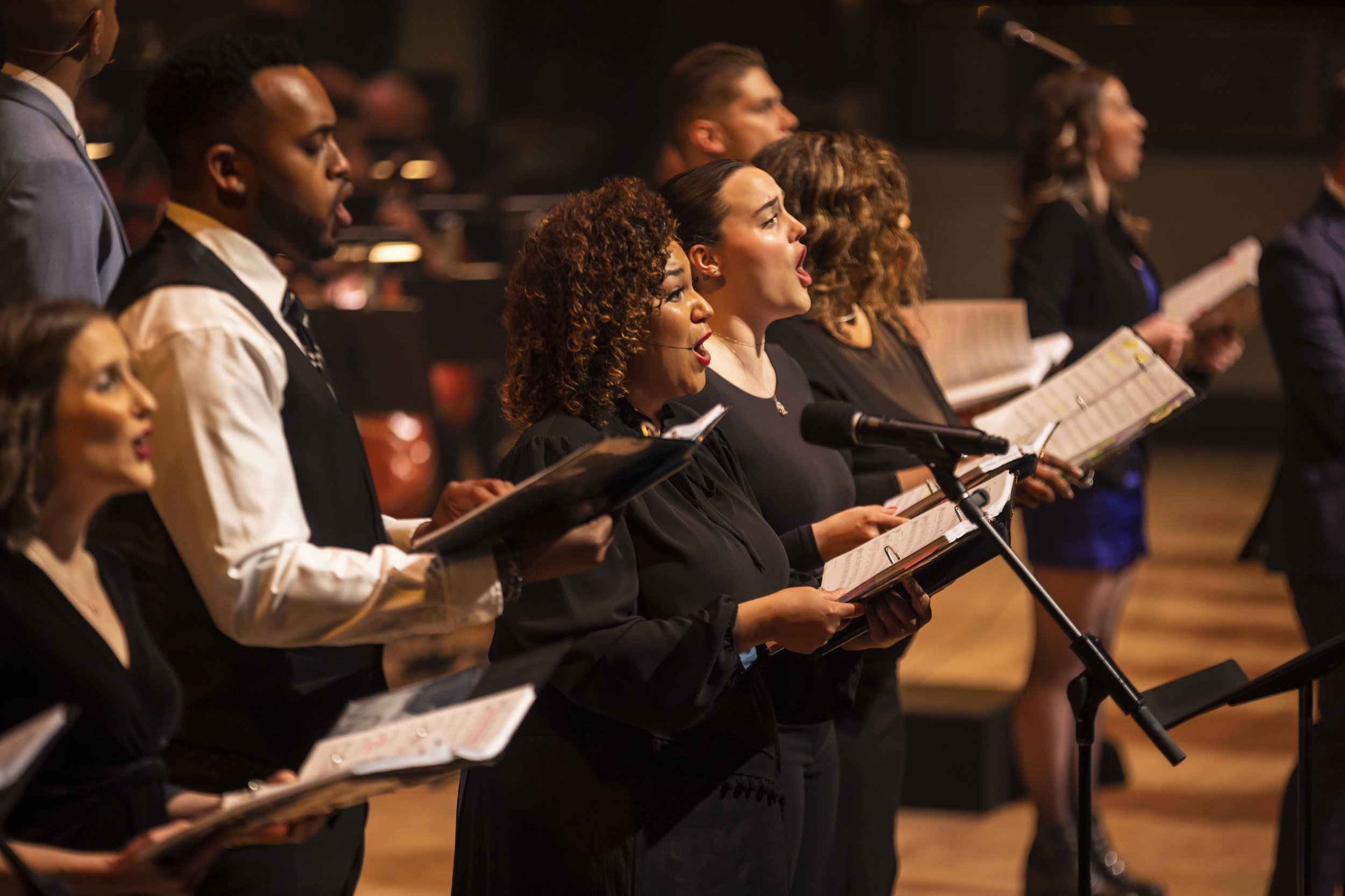
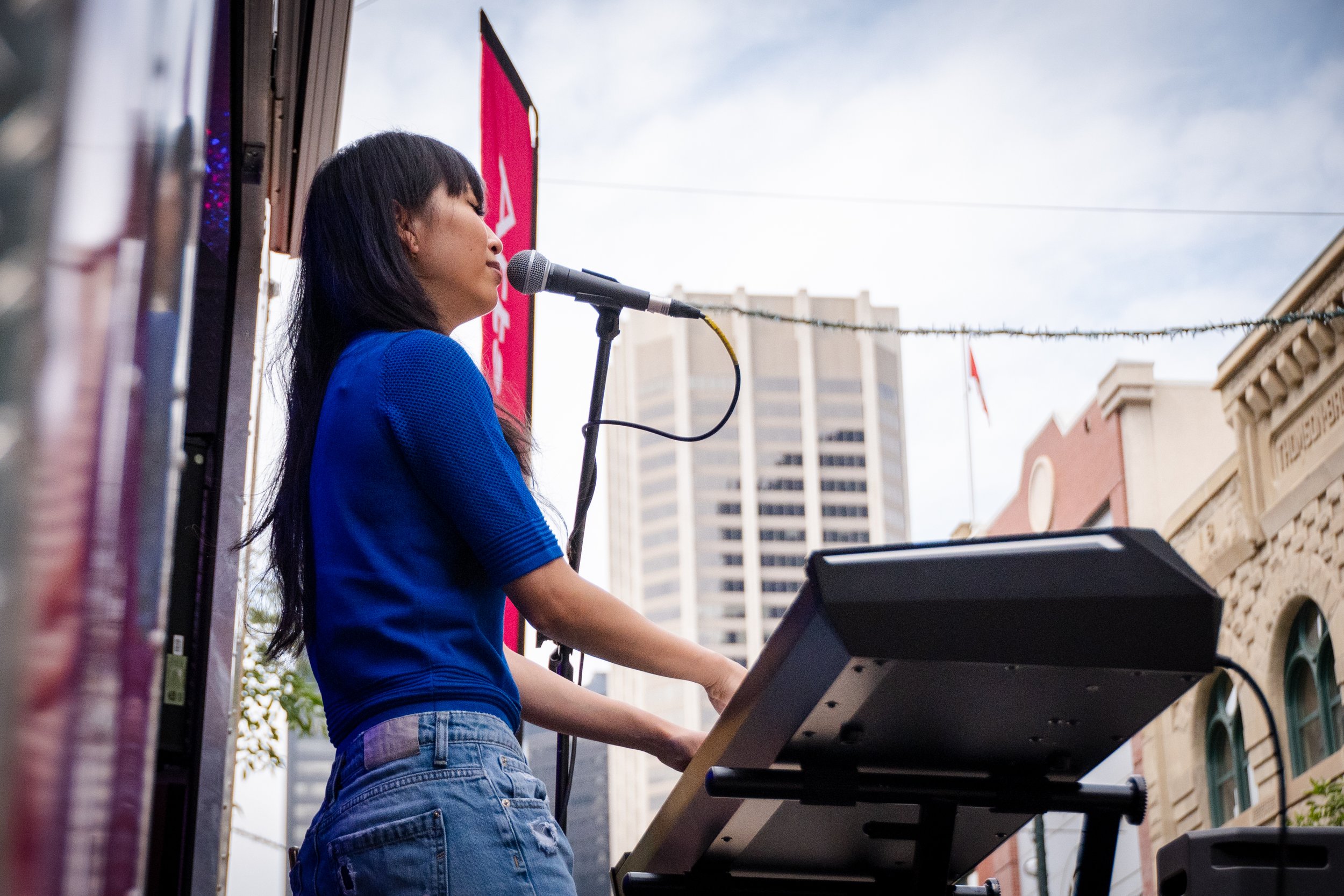
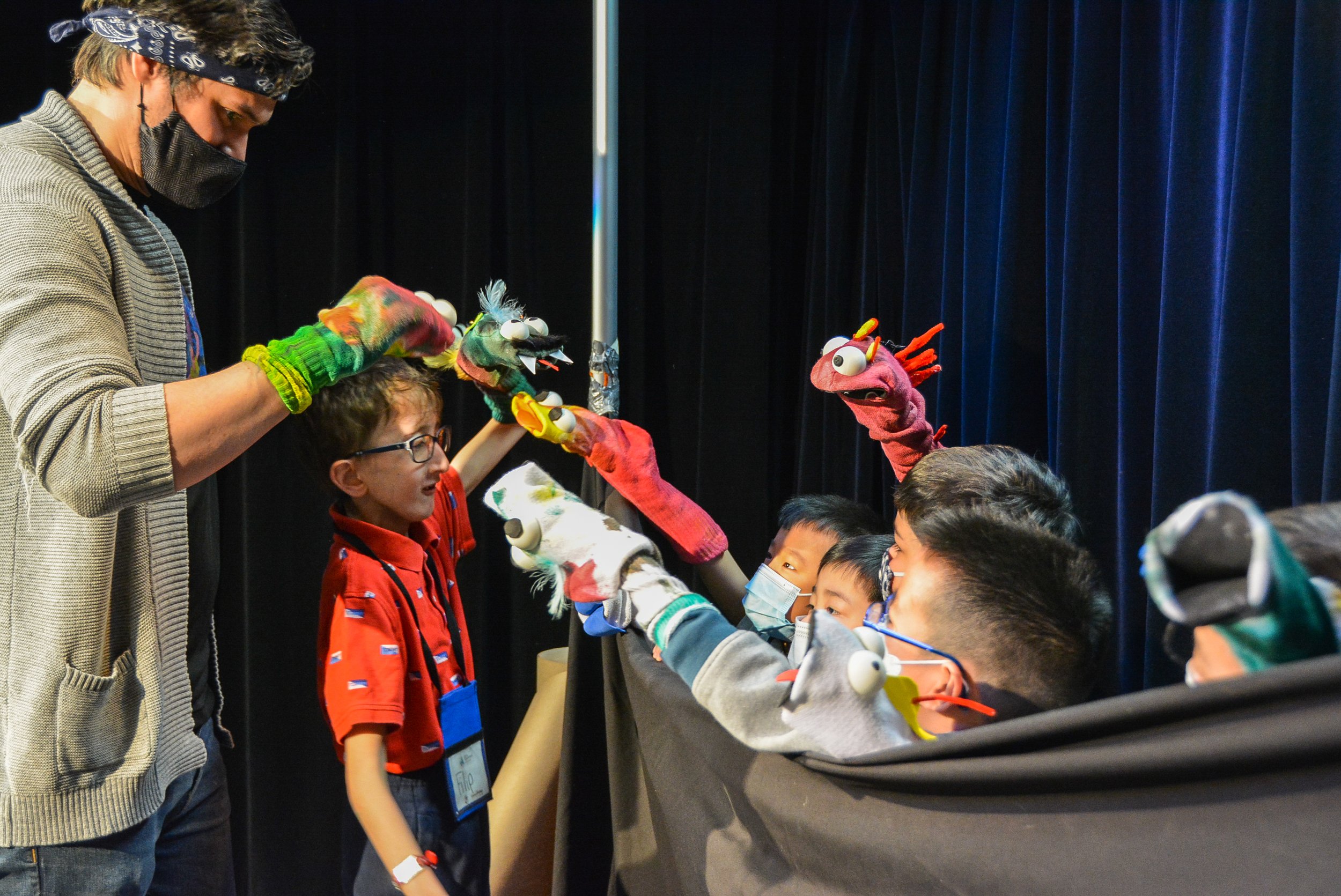
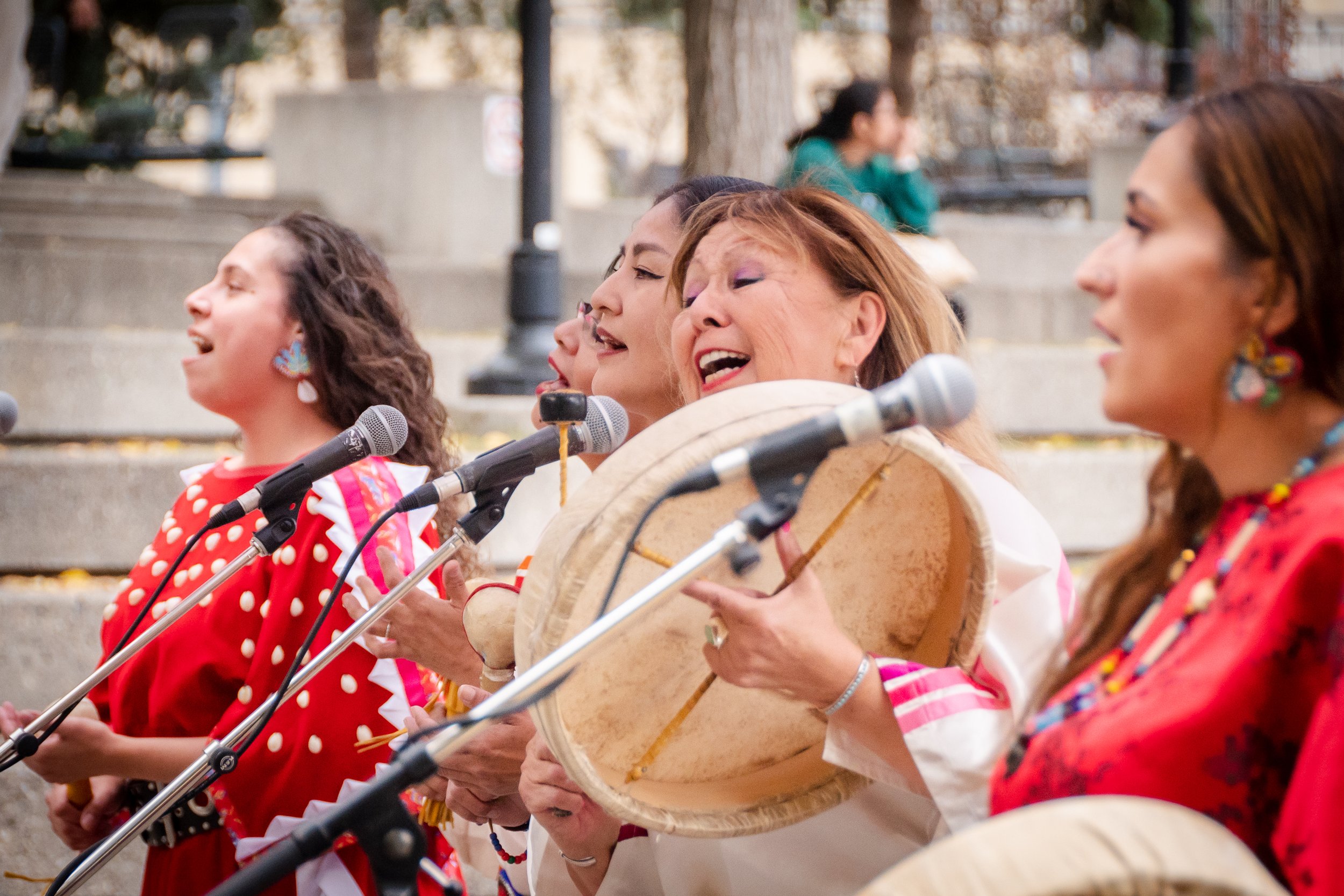

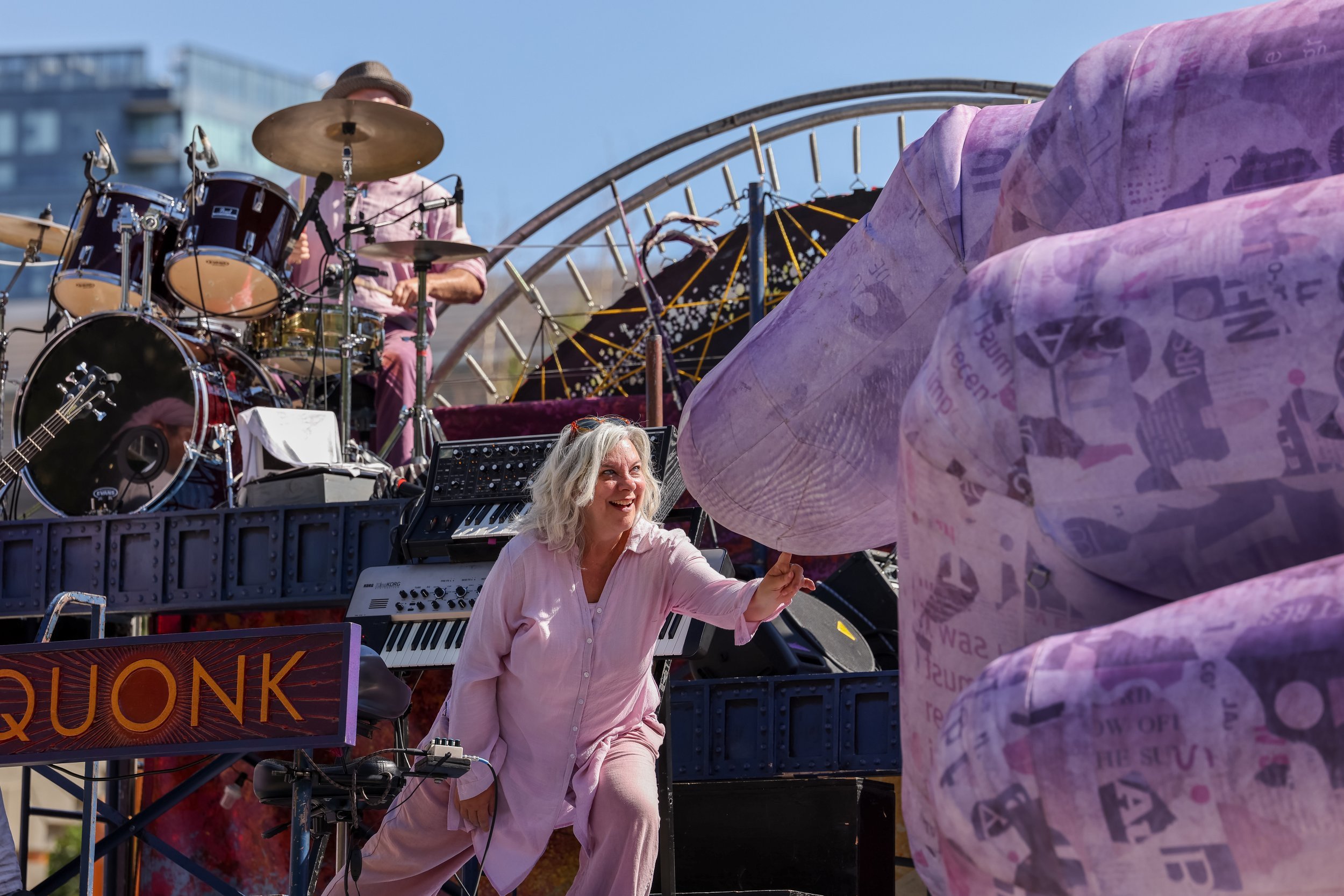
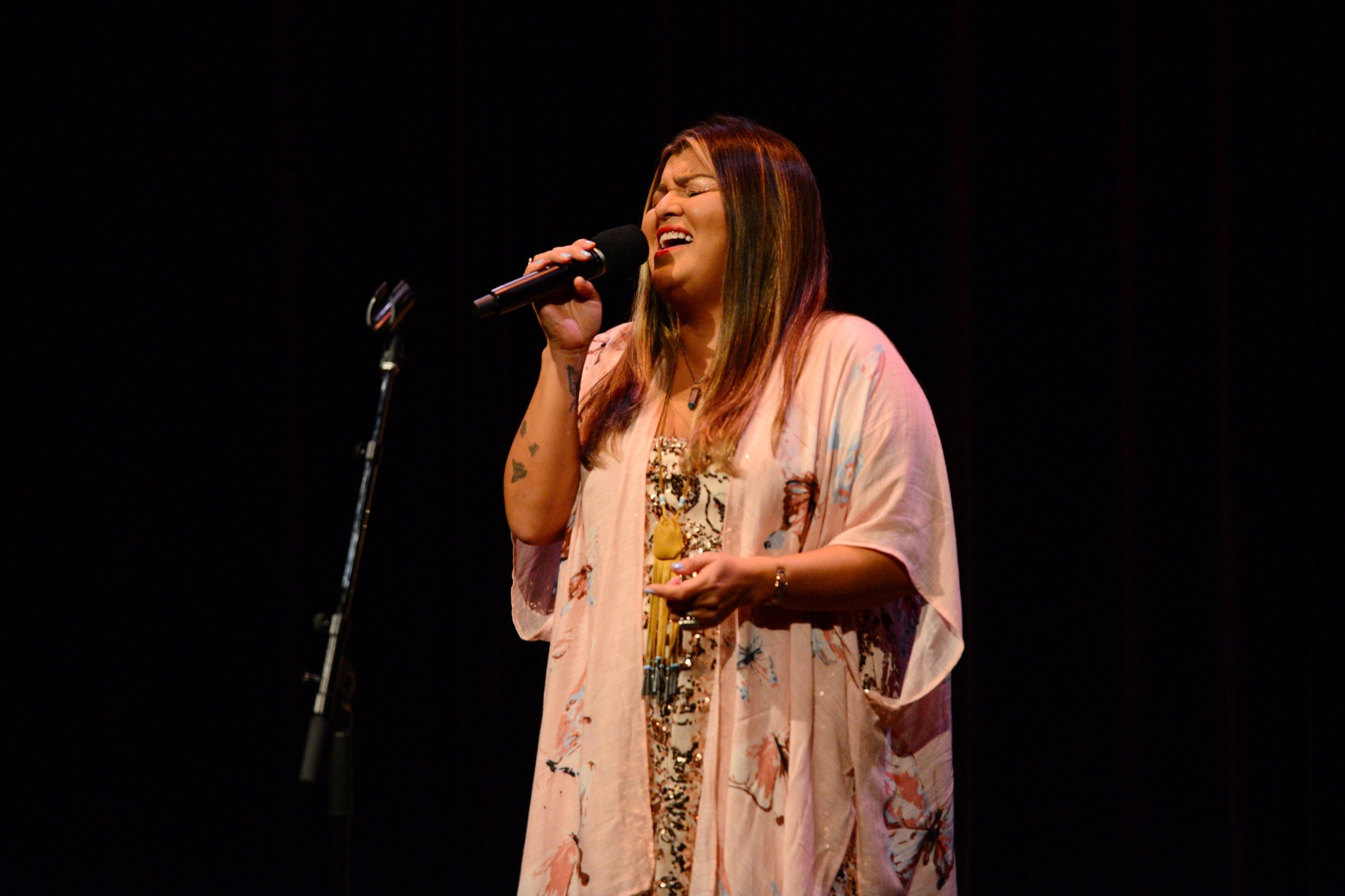
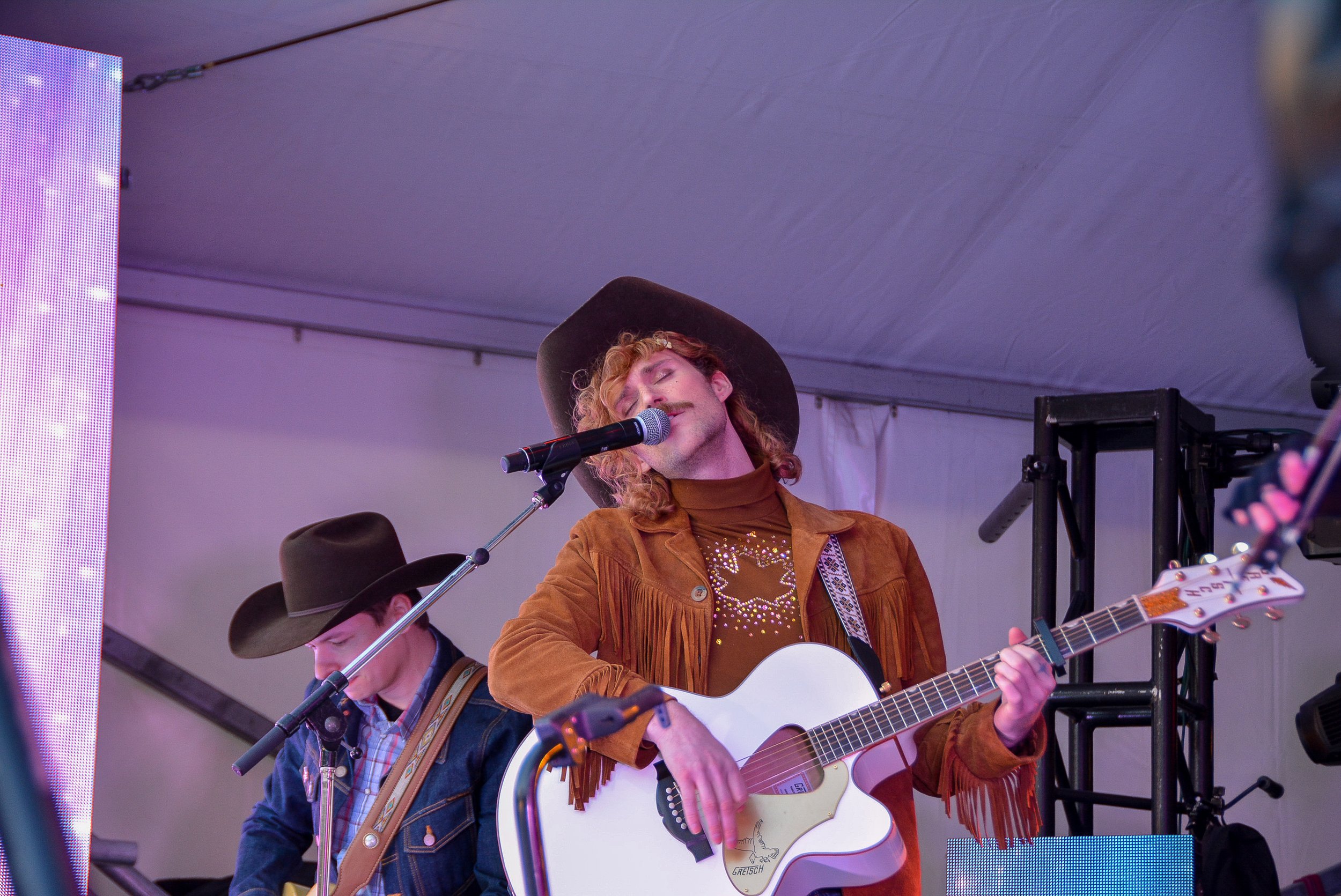
Just as they were in 1969, the winds of change are once again blowing, ushering in a fresh perspective on the role of the arts in Calgary. Arts Commons has become more than a performing arts centre, it’s become a thriving social, economic, and cultural catalyst in the city of Calgary. By thinking bigger, bolder, and more creatively about the future, Arts Commons is forging a place where everyone can meaningfully participate in community.
The time for reinvention is here. It’s time to make history. Again.
Learn more about the Arts Commons Transformation project at https://www.artscommons.ca/act.



